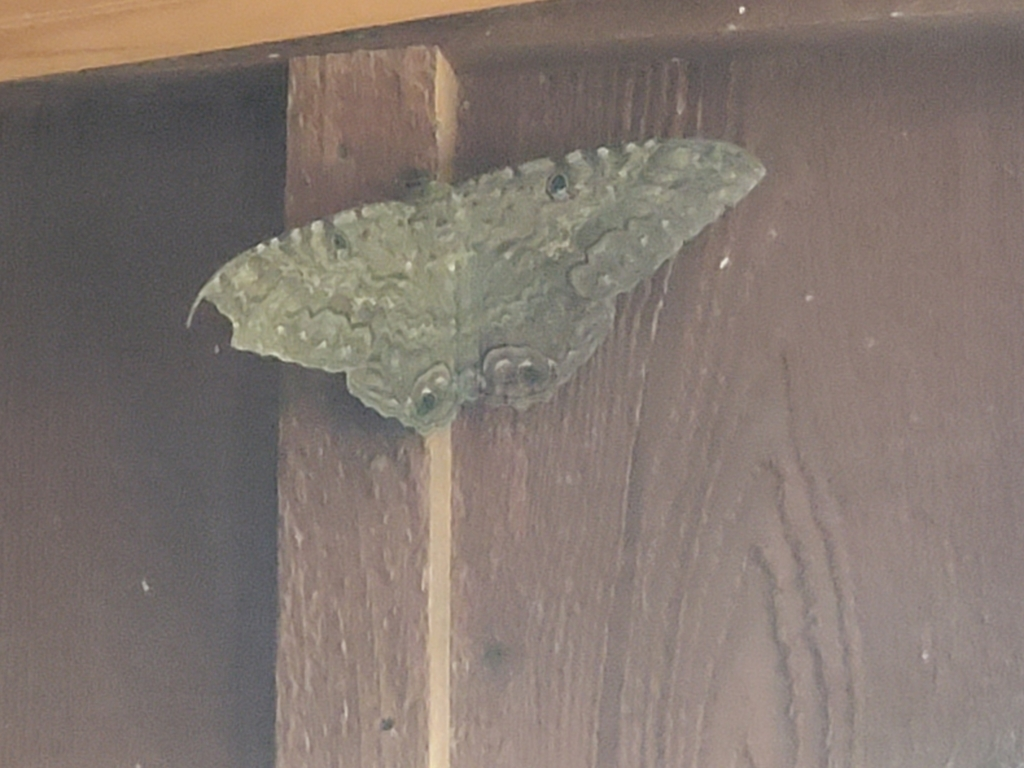 |
| Vine Sphinx moth |
I almost let the week go by without recognizing Moth Week. Moths don't get the press that butterflies do, probably because they aren't as active during the day and many of them are fairly nondescript. Obviously, that's not the case with the vine sphinx moth the to left. I did find this one during the day, so the colors are easy to see.
 |
| Black Witch moth |
Moths are important pollinators. Moths prefer light-colored, fragrant, and long tubular flowers, especially those that open at night. Some examples are honeysuckle, morning glory, bee balm, milkweed, columbine, asters, clovers, phlox, thistles, yucca, and vetches. Some food plant pollinated by moths as well as bees include redcurrants, strawberries, and stone fruit.
Moths are a prime food source for bats.
Most people know that the monarch butterfly migrates, but many other butterflies and moths do as well. I mentioned the witch moth above migrates through here, but so do other moths. Not a lot is known about moth migration, but here is a short piece on the subject. Although the study was done on moths in Europe, the information is applicable here.
I hope you'll take some time to learn more about these fascinating insects.
No comments:
Post a Comment